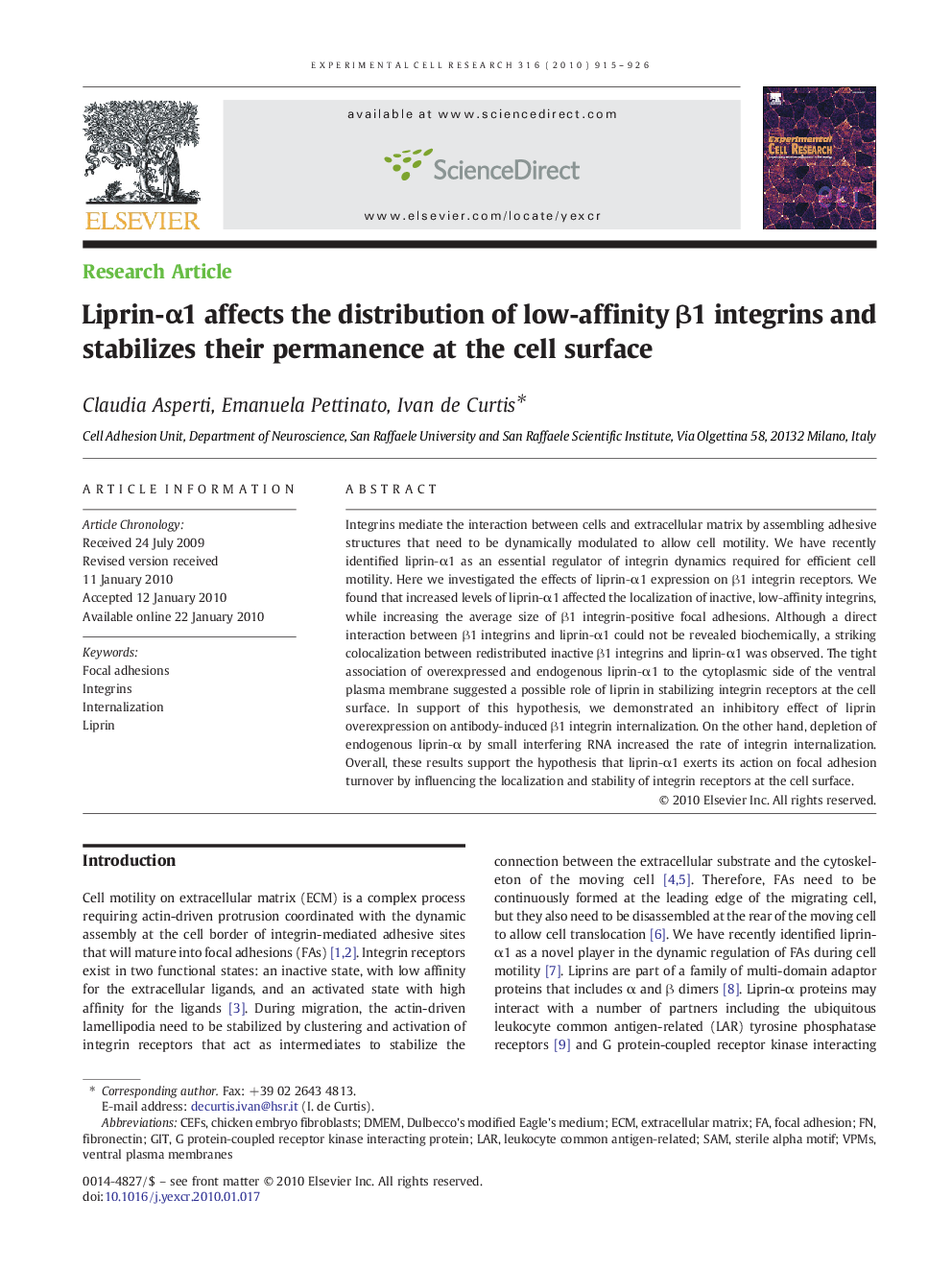| Article ID | Journal | Published Year | Pages | File Type |
|---|---|---|---|---|
| 2131095 | Experimental Cell Research | 2010 | 12 Pages |
Integrins mediate the interaction between cells and extracellular matrix by assembling adhesive structures that need to be dynamically modulated to allow cell motility. We have recently identified liprin-α1 as an essential regulator of integrin dynamics required for efficient cell motility. Here we investigated the effects of liprin-α1 expression on β1 integrin receptors. We found that increased levels of liprin-α1 affected the localization of inactive, low-affinity integrins, while increasing the average size of β1 integrin-positive focal adhesions. Although a direct interaction between β1 integrins and liprin-α1 could not be revealed biochemically, a striking colocalization between redistributed inactive β1 integrins and liprin-α1 was observed. The tight association of overexpressed and endogenous liprin-α1 to the cytoplasmic side of the ventral plasma membrane suggested a possible role of liprin in stabilizing integrin receptors at the cell surface. In support of this hypothesis, we demonstrated an inhibitory effect of liprin overexpression on antibody-induced β1 integrin internalization. On the other hand, depletion of endogenous liprin-α by small interfering RNA increased the rate of integrin internalization. Overall, these results support the hypothesis that liprin-α1 exerts its action on focal adhesion turnover by influencing the localization and stability of integrin receptors at the cell surface.
